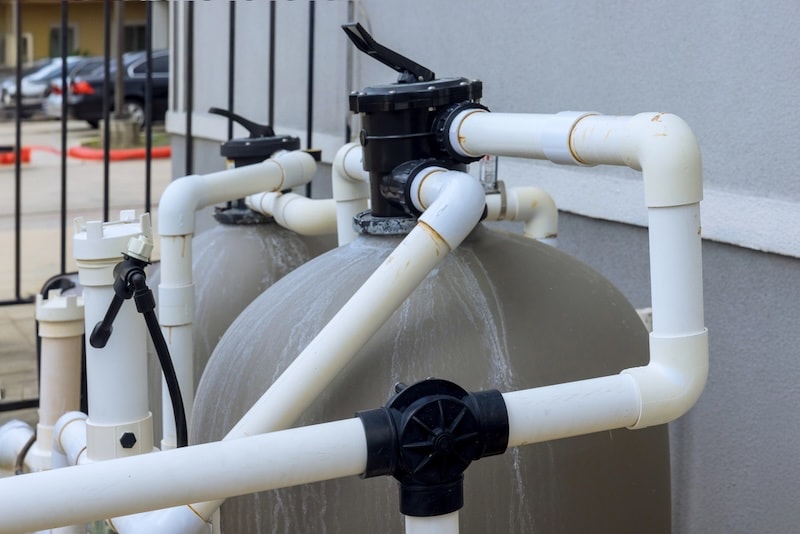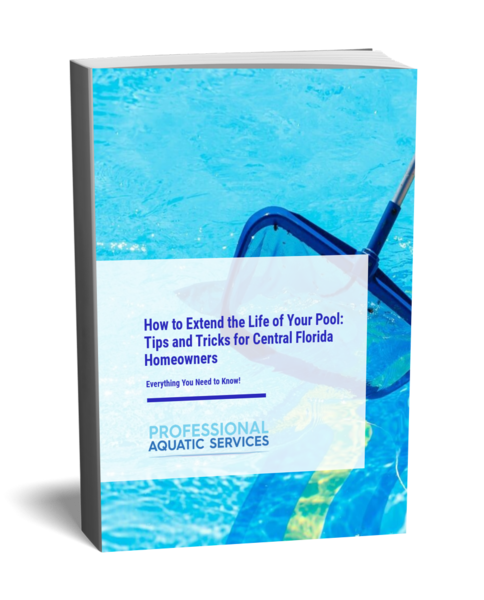If you’ve been wondering whether your pool pump should run on 110 or 220 volts, you’re not alone. It’s one of the most common questions homeowners in Winter Garden ask when upgrading or installing new pool equipment. The truth is, pool pump voltage plays a bigger role than most people realize—it affects how efficiently your system runs, how much you’ll pay in electricity, and even how long your pump will last.
In this guide, we’ll break down the real difference between 110V and 220V pool pump setups, how each one fits with Florida’s electrical requirements, and what works best for your backyard pool. Whether you’re remodeling an older system or installing new equipment, here’s what you need to know to make the right call.
Why Pool Pump Voltage Matters in Winter Garden

Before you decide whether to use 110 or 220 volts, it’s important to understand why pool pump voltage matters in the first place. The proper setup affects more than just performance. It impacts safety, energy use, and long-term reliability.
The Role of Voltage in Pump Efficiency and Longevity
In Winter Garden, pools aren’t just for summer. They are in use almost all year. That means your pool pump works harder and runs more often than in cooler climates. Choosing the right pool pump voltage becomes vital to keeping your system going smoothly and avoiding unnecessary wear.
Voltage affects how efficiently a pump operates and how long its internal components last. When voltage and amperage aren’t balanced correctly, your motor, rotor, and pump housing can overheat or wear down faster. The strain on your electrical wiring also increases, which can lead to tripped breakers, higher power bills, or even premature equipment failure.
But it’s not just about performance, it’s about choosing the setup that fits your pool’s needs, your home’s power panel, and your usage habits. Whether you’re upgrading an older system or planning a new installation, understanding voltage gives you a real advantage in making the right decision.
Local Electrical Standards and Pool Equipment Requirements
In Florida, all pool pump installations must follow the National Electrical Code (NEC) and local Winter Garden building codes. These standards exist for safety—and they’re enforced through required permits and inspections.
Key requirements include:
- GFCI protection on the pump circuit
- Correct wire gauge and secure connections using continuous wire
- Proper bonding of metal parts exposed to chlorinated water
- A dedicated breaker in the home’s panel or control box
Following these rules ensures your pump not only runs correctly but also passes inspection and stays safe year-round.
Comparing 110V vs 220V Pool Pump Setups
Once you understand why voltage matters, the next step is figuring out which setup—110 or 220 volts—is right for your pool. Each has its pros and cons, depending on how your system is built and how often you use it.
Key Performance Differences (Flow rate, amperage, heat)
Many people assume voltage controls how strong a pump is, but that’s not the case. The horsepower, not the voltage, determines flow rate and pressure. Where the pool pump voltage comes into play is how power moves through your system.
Using the formula Watts = Volts × Amps, you can see that a 220V pump draws half the amperage of a 110V pump for the same wattage. This means less strain on wiring, reduced heat buildup, and lower chances of a tripped breaker. A lower amperage draw also protects the motor, ground wire, and pad-mounted breaker box over time.
Cost to Run: Energy Consumption and Utility Bills
The energy consumption of a pool pump, measured in kilowatt-hours (kWh), doesn’t change based on voltage alone. A 110V pump and a 220V pump with the same horsepower draw the same amount of power. However, the lower amperage draw at 220V can reduce resistive losses in the wires, making it slightly more efficient in the long run. Especially over longer wire distances, this can help reduce wasted energy and wear on the control box.
Installation Complexity and Wiring Requirements
Installing a 110V pump is generally more convenient. It may run off a standard outlet using an extension cord, though this isn’t ideal. In contrast, 220V requires a dedicated line, a double-pole breaker, and a hardwired setup. It’s more work upfront, but often results in a cleaner, more stable installation, especially if you’re replacing older dual-voltage equipment or adding a timer to your system.
Which Voltage Is Better for Your Pool Pump in Winter Garden?
Now that you understand the technical and installation differences, let’s look at how to choose the best voltage for running a pool pump based on your pool size, equipment setup, and long-term energy goals. The right decision can save money, reduce wear, and support future upgrades.
Considerations Based on Pool Size and Equipment Load
For small, above-ground pools with minimal equipment, 110V pool pumps can be suitable, especially if your electrical panel is limited or you’re using a basic setup. These pumps are often pre-wired and easy to connect with standard plugs. However, they may struggle to support larger systems that require more power to pull water through multiple features like heaters, chlorinators, or waterfalls.
In contrast, most inground pools in Winter Garden are better suited for 220V. With a dedicated ground terminal and cleaner connections, 220V setups offer the strength and stability needed to run larger motors under constant load. If you’re planning any pool equipment upgrades, 220V is typically the more scalable option.
When to Upgrade From 110V to 220V
If you’re replacing an old pump or planning a pool equipment repair, it’s a good time to consider switching to 220V. Running new wire and installing a double-pole breaker might require an electrician, but the long-term benefits are worth it. Upgrading during replacement avoids doing the work twice later, especially if your current system feels underpowered or trips frequently.
Impact of Voltage Choice on Variable Speed Pumps
Most variable-speed pool pumps (VSPs) are designed to run on 220V. These pumps offer the best long-term energy savings, and they operate more efficiently at lower speeds when properly connected to a stable power source. Choosing 220V supports these features and gives you a future-ready setup that meets Florida energy codes and demands.
Florida Code & Electrical Safety Tips
When it comes to pool pump voltage, safety isn’t optional; it’s required. In Florida, your setup has to follow the National Electrical Code (NEC) and local rules in Winter Garden or Orange County. That means obtaining the necessary permits and ensuring everything is installed to code before the job even starts.
Skipping permits or wiring things incorrectly can lead to inspection delays or even pool equipment repair later. To avoid problems:
- Make sure your pump has GFCI protection and bonded metal parts.
- Use the correct wire size for your pump’s voltage and distance from the breaker.
- Install a dedicated breaker. Never rely on an extension cord.
It’s just as important to hire someone who knows what they’re doing. A licensed, insured installer with pool-specific experience will learn how to handle low voltage, ground terminals, and all the other moving parts, so everything runs safely and passes inspection the first time.
Final Verdict: 110 or 220—What’s Right for Your Pool?
Still weighing your options? Now that you understand how pool pump voltage affects performance, cost, and safety, here’s a quick side-by-side to help you compare.
Summary Comparison Table (110V vs 220V)
|
Feature |
110V Pool Pump |
220V Pool Pump |
|---|---|---|
|
Installation |
Easier; may use a standard outlet |
Requires a dedicated breaker & wiring |
|
Amperage Draw |
Higher |
Lower (less heat on wires) |
|
Efficiency |
Slightly less efficient |
Slightly more efficient over distance |
|
Durability |
Can strain motor on larger pools |
Better long-term motor protection |
|
Best For |
Small, above-ground pools |
Most inground pools & VSPs |
Expert Tip: Futureproofing With 220V Setup
If you’re in Winter Garden with an inground pool—or planning to install a variable-speed pump, 220V is usually the smarter long-term choice. It offers more stable power, supports larger equipment loads, and aligns with modern energy standards. Even if 110V seems easier now, switching to 220V can reduce stress on your system and avoid issues down the line.
Always consult a licensed installer to confirm your breaker panel, wire size, and electrical permits are ready for the upgrade. A proper setup today means fewer headaches tomorrow.
Book Professional Pool Equipment Installation in Winter Garden
Choosing the right pool pump voltage is just the start. Installing it safely and legally is just as important. Professional Aquatic Services offers expert help with permits, wiring, and setup across Winter Garden. Our licensed team handles everything to code, so your system runs efficiently from day one. Whether you’re upgrading or starting fresh, we’ll make sure your pool equipment is installed correctly and built to last.
Ready to get started? Book your installation today.
FAQs About Pool Pump Voltage
Yes, but it’s not a simple plug swap. Switching from 110V to 220V requires a licensed electrician to run new wiring, install a double-pole breaker, and verify that the pump motor is rated for dual voltage or 220V operation. Don’t attempt this on your own. Safety and code compliance matter.
The total energy used in kilowatt-hours (kWh) is the same. However, 220V draws less amperage, which means less heat is lost in the wires. This improves the overall efficiency and reduces wear on the motor and electrical components, helping your pump last longer and perform more consistently.
It depends on your panel’s available space and capacity. A 220V setup requires a dedicated double-pole breaker, which may necessitate an upgrade if your panel is full or outdated. Have a qualified electrician inspect it before making changes.
Yes, when installed properly. A 220V system with a dedicated breaker, correct wire sizing, and proper grounding is generally more stable and reliable. This setup helps reduce the chance of overheating, electrical faults, or nuisance tripping, especially for larger or variable-speed pool pumps.

